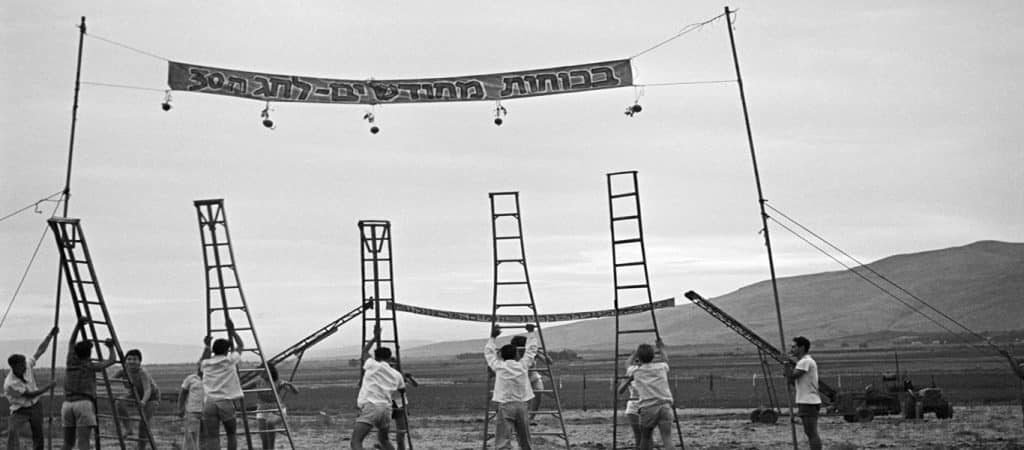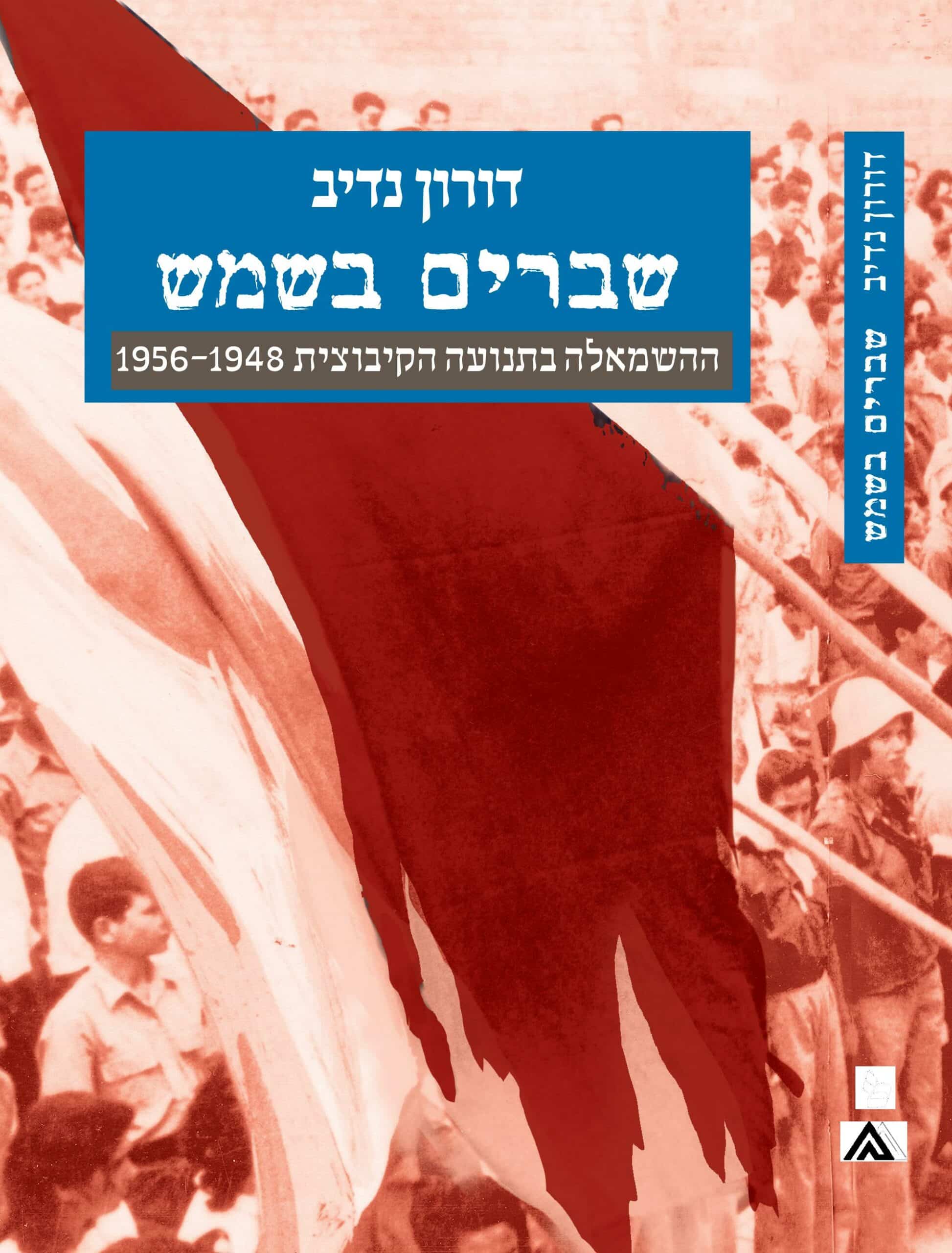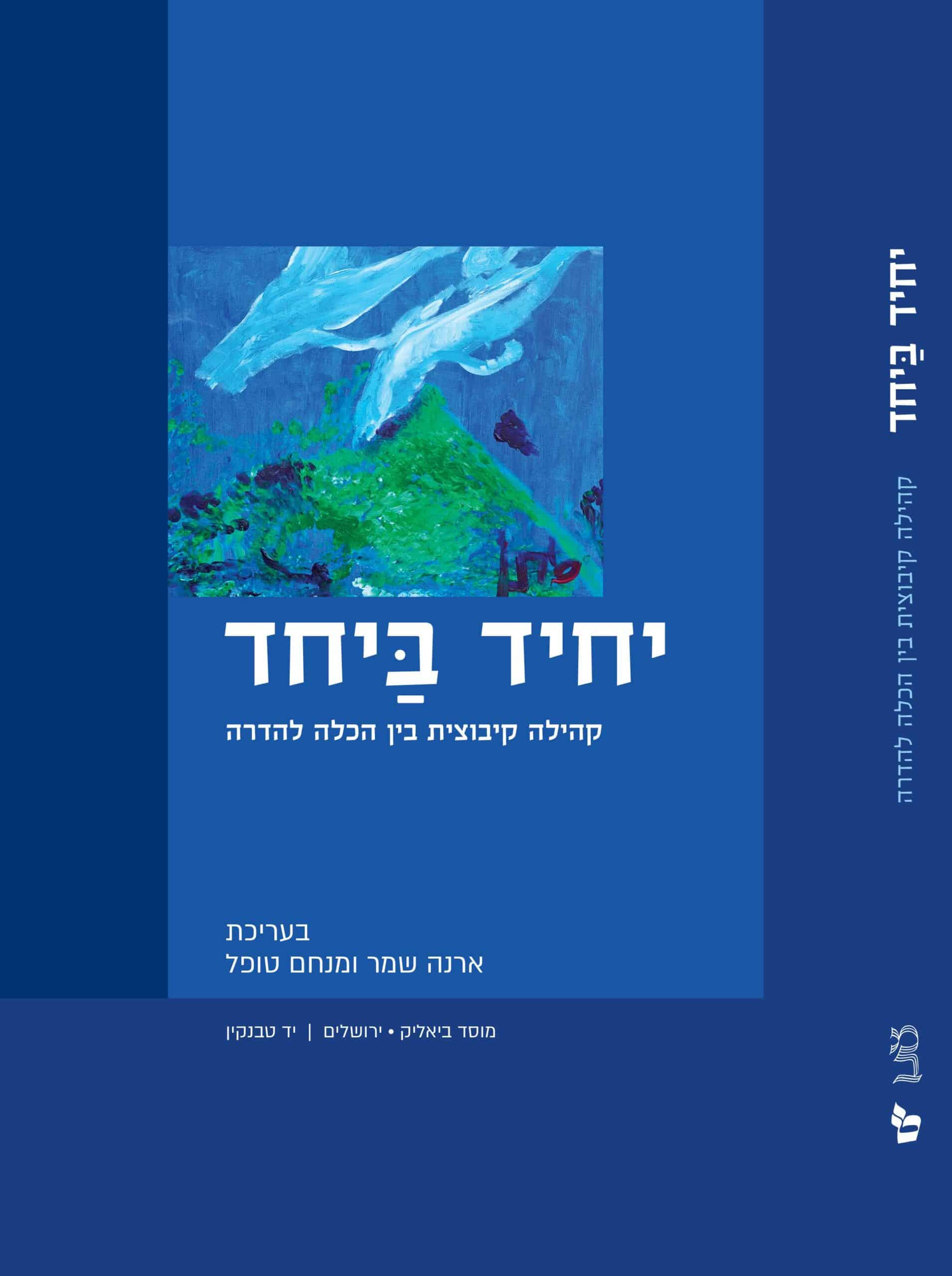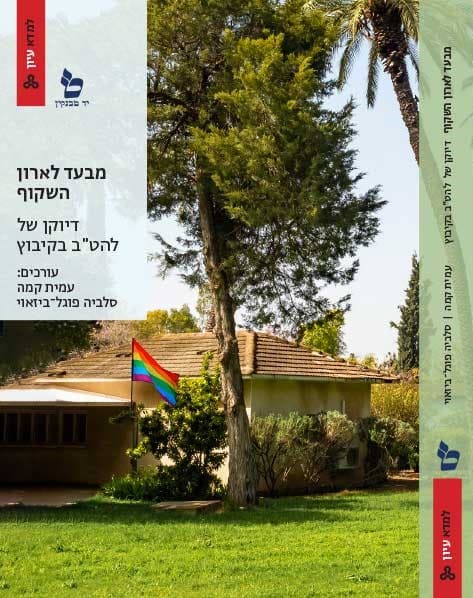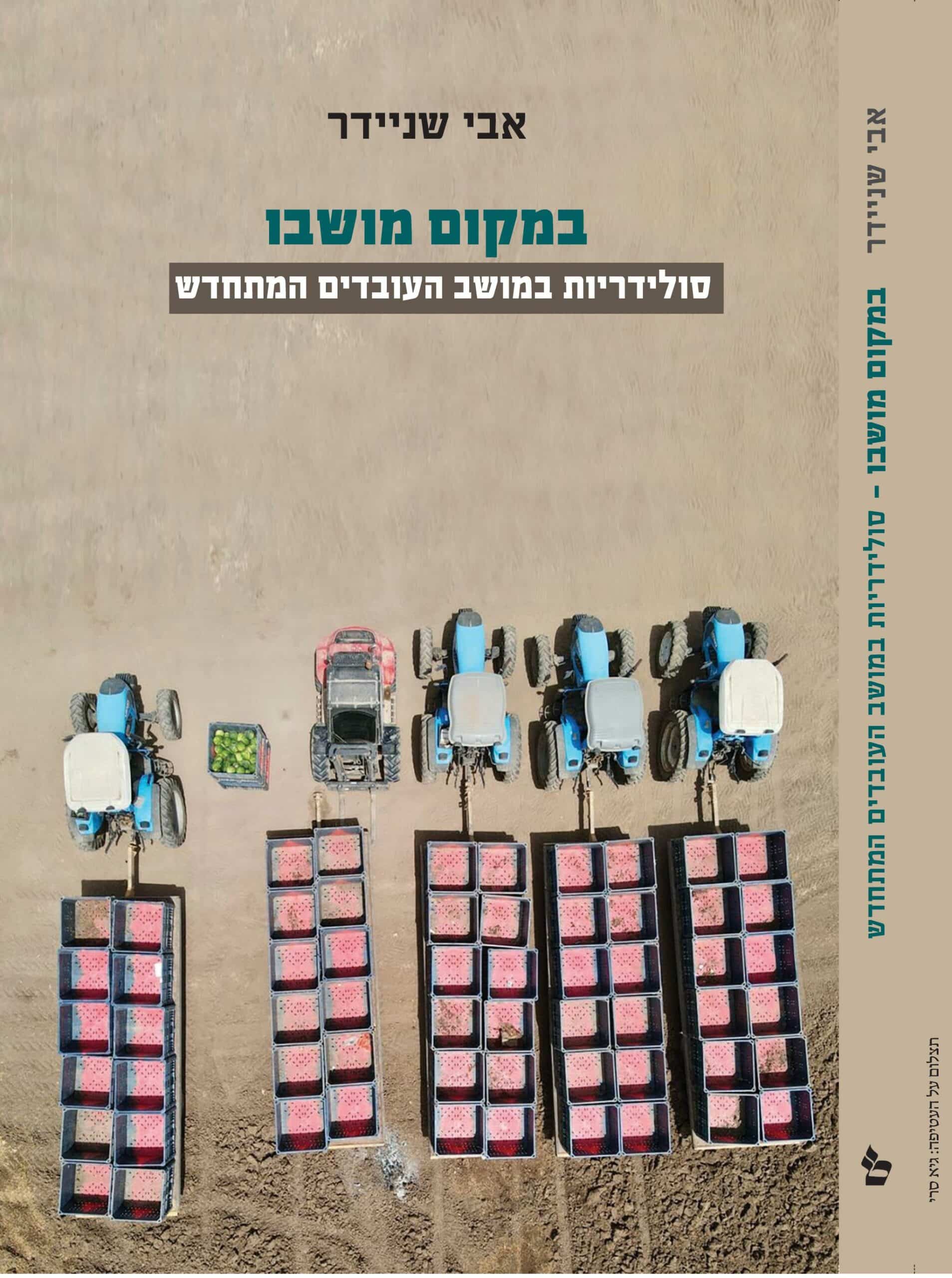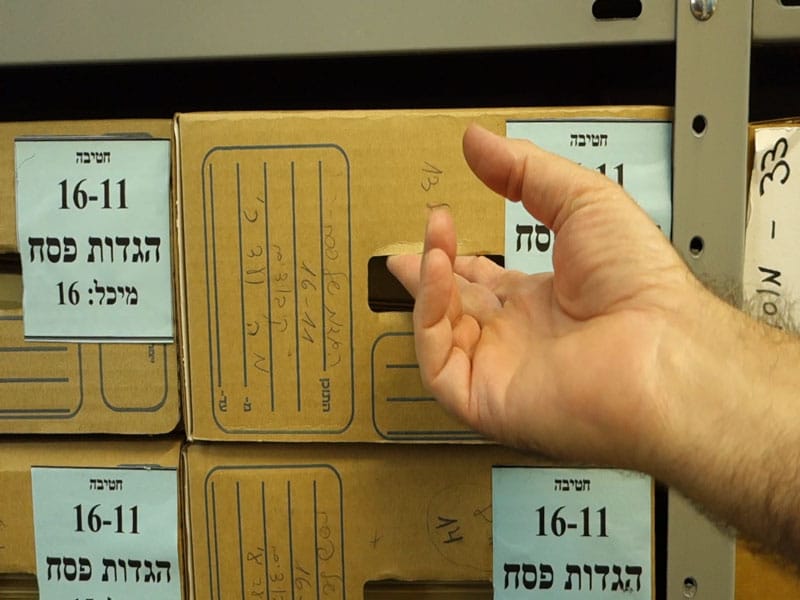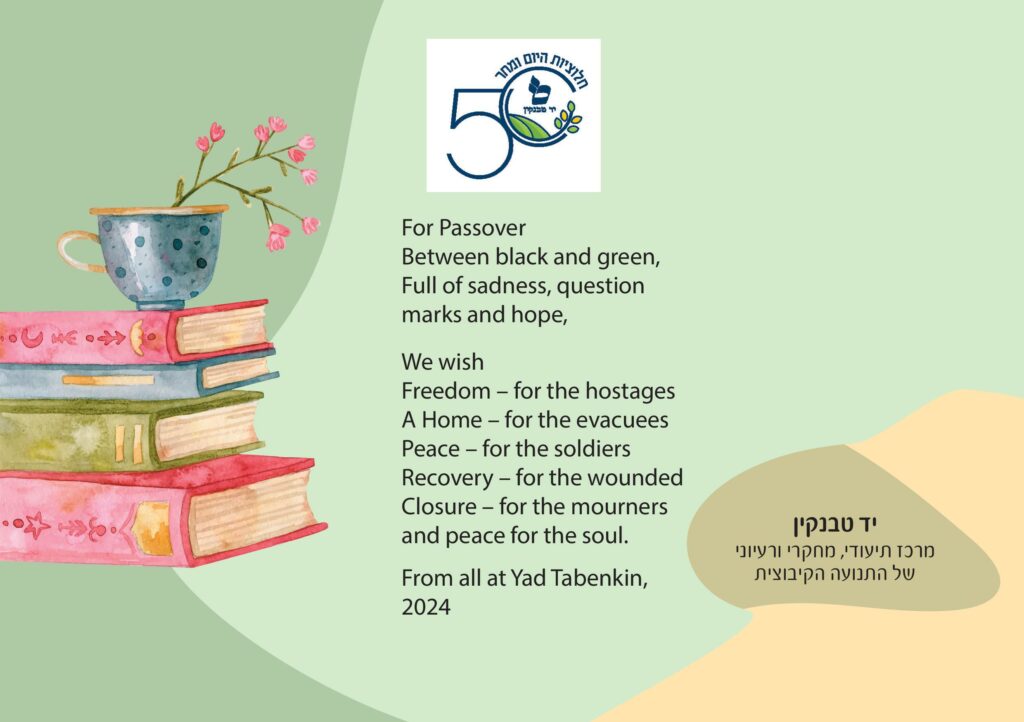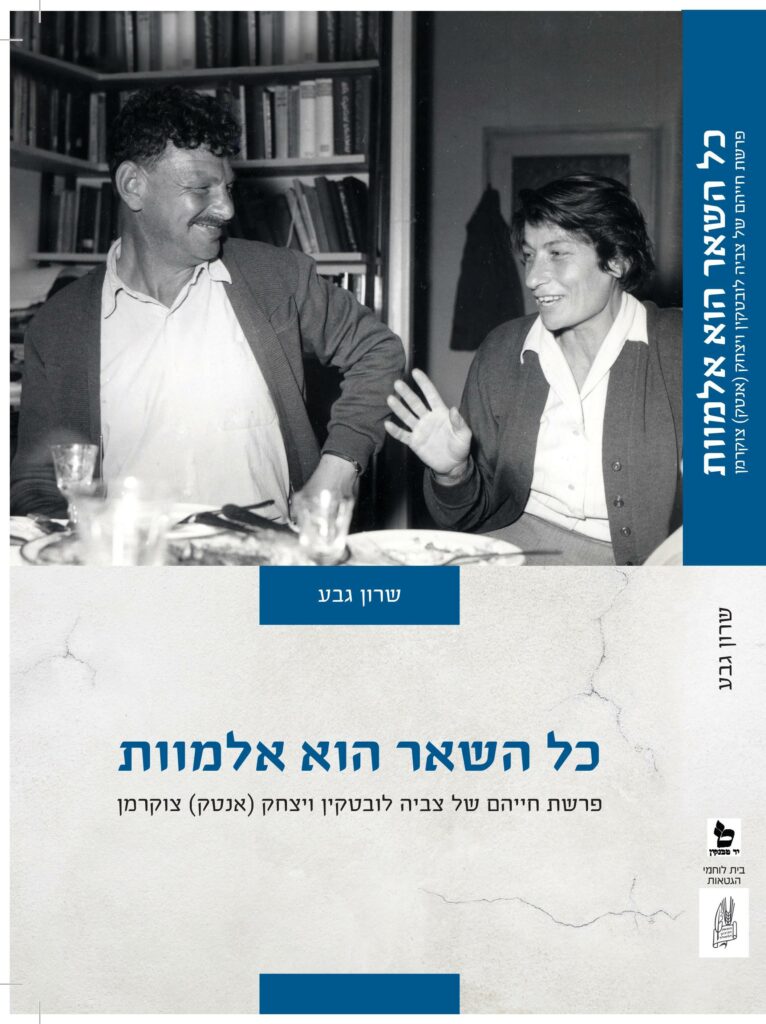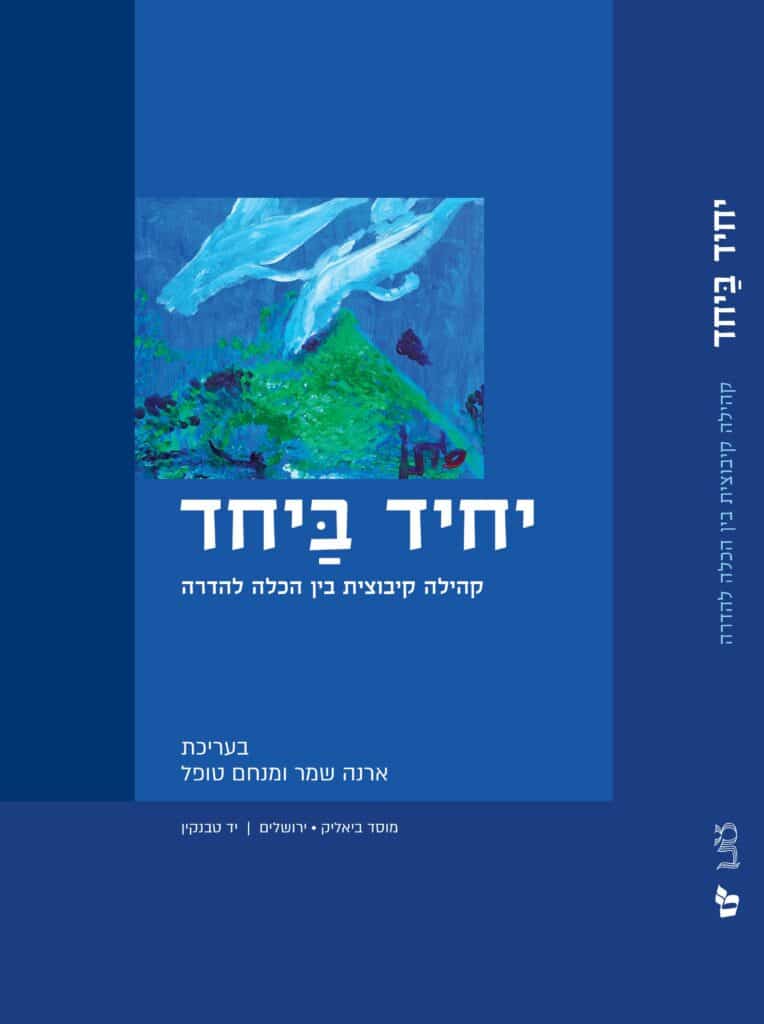Doron Nadiv
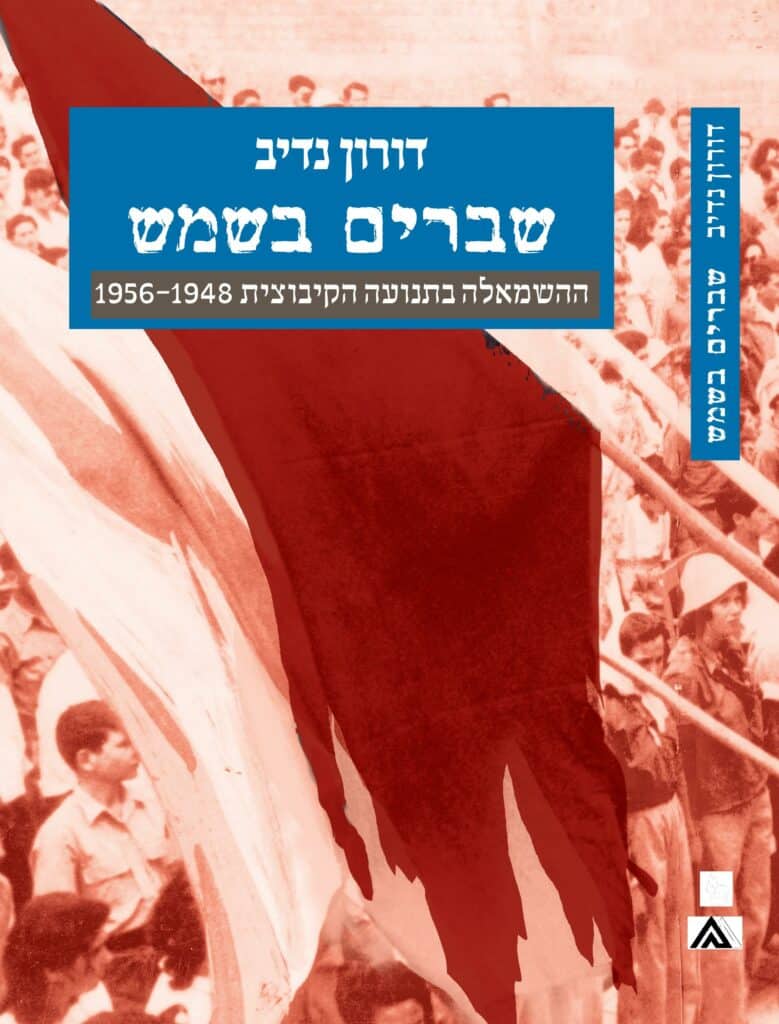
This study describes and analyzes the way leaderships of the Hakibbutz Ha'artzi, Hakibbutz Hameuchad and the kibbutzim contended with the phenomenon of Leftification during the years 1948-1956.
These first years after the establishment of the State were characterized by a transition from a voluntary collective during the nascent state, to a national centralized and necessitating framework, and the subsequent changes led to a decline in the pioneer’s prestige of the kibbutz movement that previously had been carrying the burden of settlement, security and immigration absorption. The struggle between the leaderships of Hakibbutz Ha'artzi and Hakibbutz Hameuchad and the opposition from the Left should be understood against the background of the deep crisis based on social, ideological and economic incentives, which took place in the fifties of the twentieth century. The kibbutz movement has lost its impetus of settlement, absorption and demographic growth and found itself in a profound crisis, which started at the end of 1949 and continued during the fifties of the twentieth century. In the first decade of the existence of the State the crown of pioneering passed to the Moshav Movement, and the kibbutz movement lost its power and prestige.
In the research literature the struggle against the Leftist factions in the kibbutzim of Hakibbutz Ha'artzi and Hakibbutz Hameuchad in these years is discussed, so far, only partially. There is a limited discussion of the struggle against Leftification in kibbutzim as an example of the general struggle against the Left, without a detailed description of the differences between Hakibbutz Ha'artzi and Hakibbutz Hameuchad. Very few researches deal with the phenomenon of the oppositional Leftification in the kibbutzim of Hakibbutz Ha'artzi and Hakibbutz Hameuchad and do not focus on the phenomenon while extracting contexts both within the internal kibbutz dimension and the dimension of the movement.
The approach this research is based on is the "integrated approach” which I developed in my MA thesis on the phenomenon of Leftification in kibbutz Har’el. This approach criticizes the research of "history from above", the prevailing approach in the research of the kibbutz movement, and indicates the advantages of researching "history from below", meaning that in order to understand, refine and explain the phenomenon of “oppositional Leftification” in the kibbutzim, one should research the roots “from below” by studying events in individual kibbutzim. However, the “integrated approach” is also aware of the limitations of the “history from below”, and therefore examines the struggle between the leadership and the opposition applying a method that combines the two approaches.
Study of the events in individual kibbutzim, in accordance with the “integrated history approach” may expand the understanding of the phenomenon of Leftification in Hakibbutz Ha'artzi and Hakibbutz Hameuchad and of the contending of the movements’ leaderships with the phenomenon. Furthermore, the current study may designate the "integrated approach" as suitable in cases of additional research of the history of the Labor Movement.
The study premises that only in a limited number of kibbutzim, where an interrelationship between social and political ideological factors prevailed – a real potential for a split existed. This was the case, for instance, in the eight kibbutzim that are included in this study. Whereas in most of Hakibbutz Ha'artzi and Hakibbutz Hameuchad kibbutzim in 1948, the United Workers Party was formed [hereinafter Mapam] by Hakibbutz Ha'artzi and Hakibbutz Hameuchad, and its nonparticipation in the first government headed by Ben-Gurion caused an increasing identification with the Soviet Union. The investigation of the nature of this identification created an internal unrest within Mapam, the movements and the kibbutzim, which gave rise to the conflict between the leaderships of Hakibbutz Ha'artzi, Hakibbutz Hameuchad, Mapam and the leadership of the Left, headed by Moshe Sneh and Ya'akov Riftin.
The leadership struggle and the ideological and political struggle that was conducted between the followers of Mapam’s Left Zionist tradition and the Left-wing accompanied the party discussions towards the Haifa conference in May 1951, and came to a conclusion in January 1953, after removing the Left-wing from Mapam.
The phenomenon of Leftification in Hakibbutz Ha'artzi and Hakibbutz Hameuchad radicalized even further against the background of the Prague Trials (20.11.1952) and the Sneh affaire, constituting the culmination of the struggle against the Leftification. The Sneh affaire stood in the shadow of schism in Hakibbutz Ha'artzi, and the movement leadership feared for yet another schism, this time on the Left side of the political map, with possible destructive results to both kibbutz movements.
This was the main reason why the kibbutz movements, from the beginning of the Prague Trials, acted forcefully and obsessively to remove the Sneh supporters – first from the party, by removing Mapam’s Left-wing, and consequently from the kibbutzim. The movements’ objective was to prevent the expansion of the Left support and to sever it as fast as possible. In Hakibbutz Ha'artzi the danger of the Left camp expanding significantly was a genuine danger, while in Hakibbutz Hameuchad this danger was smaller. Hakibbutz Hameuchad leadership, that already had experienced the painful split in its kibbutzim, led the struggle against the Left, and Hakibbutz Ha'artzi leadership who had been hesitating until the opening of the Prague Trials, joined the struggle.
The mutual influence between the two groups affected the course of its leaders. Hakibbutz Hameuchad that led the struggle against the Left adopted the aggressive approach, according to which reality can be shaped by the use of force. This concept was unknown to Hakibbutz Ha'artzi members who were educated on the heritage of the youth movement. However, due to the Sneh affaire, which threatened their movement’s integrity, Hakibbutz Ha'artzi's leadership, while integrating the necessary adjustments, adopted Hakibbutz Hameuchad’s aggressive practices, whereas one of the central lessons Hakibbutz Hameuchad leadership took from the schism and the Sneh affaire was adopting the concept of the ideological collectivism, which was current in Hakibbutz Ha'artzi but essentially foreign to the approach of Hakibbutz Hameuchad.
The cooperation between the movements’ leaders, Left-wing leaders and the leaders of the kibbutz’s camps played a crucial role both in the rise of the Left and the strengthening of its power in the kibbutz movements, as well as in the containment and removal from the party and from the kibbutzim. In those kibbutzim where the kibbutz secretary cooperated, initiated and engaged the movement’s leadership, the struggle against the Left was relatively short and fast, whereas Yad Hannah and Har’el are an example of how without cooperation between the kibbutzim’s leaders and Hakibbutz Ha'artzi and Hakibbutz Hameuchad leaderships, it was impossible to remove the Leftists.
An additional characteristic associated with the leadership of the Left in the kibbutzim is the age factor. In five kibbutzim: Ein Shemer, Mesilot, Carmiya, Kissufim and Yir'on, the Left-wing leaders were older members who did not belong organically to a gar’in who had joined the kibbutz and supported the Left (apart from Kissufim). These members were a kind of mentors and guides who greatly influenced the increase in support for the Left.
This fact proves that the relationship between the leadership of the Left-wing in the parties and movements relied, naturally, on the familiar and veteran Left-wing leadership. Indicating that not only the members of the younger generation supported the Left, but also the more veteran members, some of which were associated with the party and Hakibbutz Ha'artzi leadership: Riftin in Ein Shemer and Jeshajahu Weinberg in Mesilot.
During the period of the Prague Trials Hakibbutz Hameuchad leadership knew where Sneh’s power centers in the kibbutzim could be found, while Hakibbutz Ha'artzi conducted a referendum in January 1953, as a tool for mapping the phenomenon of Leftification.
The phase of the extensive "purifications" in the kibbutzim started after the excision of the Left-wing division from Mapam (28.1.1953) and after the Left leadership in Hakibbutz Ha'artzi decided not to leave the movement and the party. This situation led to the isolation of Leftists in the kibbutzim when they suddenly found themselves supporting Sneh’s faction, which was expelled from Mapam, making it easy for the kibbutz movements’ leadership to remove them.
The establishment of a Left faction divided the Left leadership and its supporters and weakened the Left camp which split between Sneh supporters, who had founded the faction, and Riftin supporters who stayed in Hakibbutz Ha'artzi. Now Riftin could take credit of an important achievement, all Left leaders remained in Hakibbutz Ha'artzi and Mapam, and the same rule applied to Hakibbutz Hameuchad.
The relationships that developed between the Left-wing leaders and the kibbutzim leaderships that supported Sneh while still in Mapam were expressed by characteristics similar to the conduct of kibbutzim Leftist groups, indicating that guidelines regarding the management of the struggle were sent from one central point.
The Sneh supporters and Riftin prevented the movement's leadership and the kibbutzim to carry out their policies of eliminating only the Left leadership from the kibbutzim. Once the decision was made to remove the Left-wing leadership from kibbutzim Yir'on, Kissufim, Mesilot and Har’el, their followers lined up beside them and ultimately left the kibbutz together with them. Sneh intended apparently to establish a collective Left movement, “The Soviet Kibbutz”. Therefore he promoted a course of detaching a number of kibbutzim from their movement, and organizing them under the auspices of his faction. Riftin and Weinberg were candidates for the movement’s leadership, but refused to accept the proposition, remained in Hakibbutz Ha'artzi and Mapam and eventually only kibbutz Yad Hannah joined Sneh and his faction.
The research suggests that most of the Sneh supporters in Hakibbutz Ha'artzi and Hakibbutz Hameuchad belonged to the younger generation and that they were members of five young kibbutzim which were founded after the War of Independence: Har’el, Yir’on, Yad Hannah, Carmiya and Kissufim. Shuval was founded a few years before the War of Independence. Also in the veteran kibbutzim Ein Shemer and Mesilot, the Sneh supporters came from among kibbutz youth.
As for the origin of the Sneh supporters, except for Har’el whose founders were born in Israel and a few Yir’on members, in the other kibbutzim: Carmiya, Ein Shemer, Mesilot, Shuval, Kissufim, Yad Hannah and Yir’on, Sneh supporters came from the Diaspora: Egypt, Hungary, France, Germany, Romania, South America and North America.
The research findings indicate that the reasons for supporting Sneh and the Left camp stem in two main factors: ideological and social. The ideological factor was shaped during World War II and as a result of the Cold War. The youth had been educated with Soviet Union and communism sympathies to the point of the blurring of the boundaries between communism and Zionism. Moreover, both in Mapam and Hakibbutz Ha'artzi and Hakibbutz Hameuchad the phenomenon of Leftification intensified, and the leaderships played a notable role in shaping and nurturing this phenomenon.
The social factor had far reaching implications regarding the support for Sneh. Social tensions that incurred between immigrant gar’in and kibbutz founders created feelings of deprivation among the new immigrants and bitterness towards the establishment. In the case of the Sneh affaire, the social tensions and feelings of deprivation in some of the kibbutzim turned against the kibbutz and the movement establishment, helping Sneh to promote the support of the Left camp in Mapam and consequently the Left faction and the Left party under his leadership.
These findings reveal the relationship between the social and the ideological-political field, which is not sufficiently reflected in the historical research about the Sneh affaire, as these studies primarily emphasize the ideological side and the power struggles incurring in the party and the movement.
Hakibbutz Hameuchad concluded the struggle against the Left in the Council of Hakibbutz Hameuchad in Alonim (July 1953), as kibbutz representatives approved the Hakibbutz Hameuchad Secretary’s measures and policies, following the Sneh affaire. While Hakibbutz Ha'artzi concluded the affaire during the Eighth Council (April 1954), when the leadership criticized Sneh and his actions and expressed its disapproval. However, most of the discussion was directed to the internal struggle against the Left leadership that was taking place in Hakibbutz Ha'artzi, since Meir Ya'ari and Ya'akov Hazan feared the reorganization of this camp headed by Riftin and Eliezer Pery. The Eighth Council concluded the first and main period of the struggle against the Left camp in the years 1952-1953. But it also marked the beginning of the second period of the struggle against the remnants of the Left camp, which took place between 1954-1956 and has – to my opinion – not yet been studied thoroughly.
In the cause of this period, two main dates can be identified: the first, the disruption of kibbutz Har’el in September 1955, when most members supported Riftin’s position, the second, July 1956, when Riftin and Pery signed a statement making amends and admitting their mistake regarding the Sneh affaire.
The Sneh affaire caused a deep social and demographic schism which also affected the economic field in the eight kibbutzim: in the veteran kibbutzim the damage was less severe. In Ein Shemer and Mesilot the leaving of the Sneh supporters mainly left a demographic vacuum. In Shuval, which was founded before the War of Independence, the leadership layer was most impacted. In the five young kibbutzim, however: Har’el, Yir’on, Yad Hannah, Carmiya and Kissufim, who settled during and after the War of Independence and were still not established economically, the damage was highly severe. Yir’on, Yad Hannah, Carmiya and Kissufim reached the brink of disintegration and only high social cohesiveness, dedicated and accepted leadership and assistance from the movement’s leadership (not in the case of the communist Yad Hannah) helped them survive the years of rehabilitation and prevented complete annihilation.
Kibbutz Har’el fell apart following the affaire and was rebuilt by gar’in who were unable to re-establish it. Yad Hannah Senesh, which was founded by Hakibbutz Hameuchad after the division of Yad Hannah, disintegrated after several years.
The overall picture suggests that at the end of the process Hakibbutz Ha'artzi and Hakibbutz Hameuchad leaderships achieved most of their goals, both at the level of the movement as well as the individual kibbutz, and the fate of the eight researched kibbutzim indicates the relatively high success of the struggle against Leftification.
Compared with the estimates of Hakibbutz Ha'artzi who claimed a Left support between 10-15% and the estimates of Hakibbutz Hameuchad where among its settlements 30 branches of the front existed, eventually the support for Sneh was much smaller: Hakibbutz Ha'artzi, which numbered at the same time 9,874 members, was left by at the most 260 members, amounting only 2.6%, and from the 68 Hakibbutz Ha'artzi kibbutzim, six (including Gazit which is not included in this study) were damaged and one (Har’el) was dismantled and rebuilt.
Out of 8,074 Hakibbutz Hameuchad members, more than 110 left, representing a little over 1.3%, and from the 58 kibbutzim mainly three were damaged – with Yad Hannah moving to the Left party and later to the communist party Maki, and those who supported Hakibbutz Hameuchad establishing a new settlement which was dismantled a few years later.
The results of the struggle against Leftification can teach about the interrelationship between the social, political and ideological factors that led to the consolidation of Leftist groups in the eight researched kibbutzim and that were expelled due to their supporting Sneh and Riftin.



